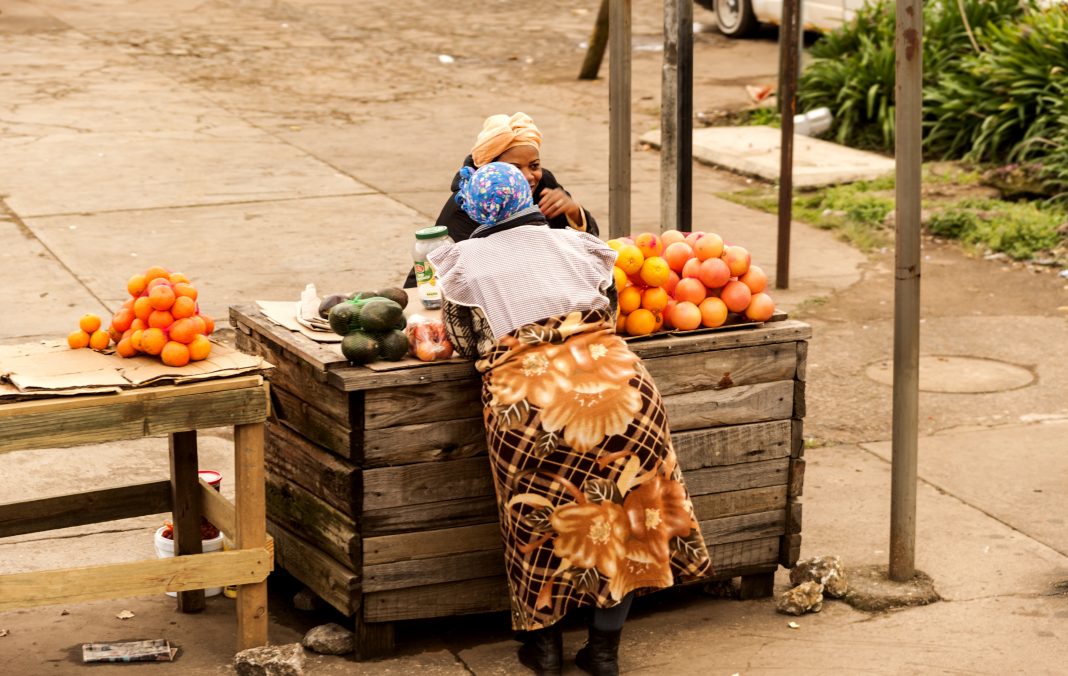
Temperature rise due to climate change has negatively affected labour productivity in the past decades and will keep damaging it, potentially at a higher extent than what has been estimated in the literature up to now. In South Africa, a future scenario with severe climate change will feature a reduction of per capita GDP of up to 20% by the end of the century, compared to an idealized future without the impacts of a changing climate.
This is what emerges from the study “Climate change and development in South Africa: the impact of rising temperatures on economic productivity and labour availability“, coordinated by the CMCC Foundation and RFF-CMCC European Institute on Economics and the Environment (EIEE) and conducted in collaboration with the Athens University of Economics and Business, recently published in the Journal Climate and Development.
In the first phase of the research, through the analysis of empirical data, researchers analysed how temperature change driven by climate change has affected the productivity of the labour in South Africa in the past. They used a longitudinal survey of South African households conducted between 2008 and 2015 to obtain key information about the relationship between weekly maximum temperatures and working hours in the same week.
The results show that climate stressors have differentiated impacts on workers from various sectors. Increasing temperatures reduce the availability of workers in industries with high exposure to heat, such as farming, construction, fishing and mining: the so-called “low-skilled labour”. On the other hand, workers of sectors like the manufacturing, or office work (“high-skilled”), which are conducted indoor, are less affected by the temperature rise.
“We wanted to understand whether temperature changes affect how much people can work in a given week and if those who work inside have a climate advantage” explains Dr. Shouro Dasgupta, a researcher at the CMCC Foundation and EIEE, co-author of the study. “And this is something the findings confirmed: labour availability initially increases with temperature until it reaches its peak and then decreases as temperature increases beyond the maximum point. However, the optimal maximum temperature maximizing weekly labour supply is 26.2°C for low-skilled workers while it is 28.2°C for high-skilled workers. Those who work inside can work until the temperature is a little higher, because they are less exposed to heat”.
The second step of the study was to use these empirical data to run an Overlapping Generations model to investigate the future and project the extent to which the expected warming will affect labour productivity in South Africa. “In the literature, we find two research approaches that are clearly separate from each other” affirms Dr. Soheil Shayegh, a researcher at the CMCC Foundation and EIEE, the lead author of the paper. “One approach relies on empirical data and builds statistical relationships between indicators based on the data. This is what we used in the first phase of our research, building on survey data from the past to establish statistical relationships between temperature and labour supply. The other approach uses Overlapping Generations models, mathematical models that we use to forecast the future of our economies based on assumptions about decision-makers’ behaviour and choices, and usually not based on forecasted data. In this research, by marrying these two methodologies and building on survey data, we were able to answer a set of complex questions about the effect of climate change on labour markets that are interesting not just for South Africa, but probably for every country” says Shayegh.
The decrease in labour availability has a ripple effect on other parts of the economy, from wages’ variations to the productivity of outputs, the researchers explain. The model suggests that, by the end of the century, the wage gap between high-skilled and low-skilled labour will reduce, with the lowest skilled labour receiving more relative wages. This is a consequence of the decrease in the relative availability of low-skilled to high-skilled labour due to the rising temperature, which increases the scarcity (and, consequently, the salary) of low-skilled workers.
“The wage gap is closing because the wages of low-skilled workers are improving, and this is good news. But when you step back and look at the bigger picture, in the whole economy, something else is happening” explains Shayegh. “We see that economic damages are much larger. Climate change is not only impacting the labour supply: it is also damaging the productivity of all sectors”.
In summary, increasing demand for low-skilled labour, coupled with a reduction in economic productivity due to climate change, reduces the wage gap between high-skilled and low-skilled labour but reduces overall output per adult. Under a severe climate scenario, the study shows that GDP per capita drops by about 20% by the end of the century, compared to the baseline case without climate change.
“It is important to note that we only considered the impact of climate change through gradual rising of average and maximum temperatures” specifies Dasgupta. “Other climate factors such as precipitation, sea-level rise, or climate shocks such as floods or droughts are not considered in this study. Therefore, it is safe to assume that we have provided a conservative estimate of the climate change damages on productivity and welfare – in a scenario without climate action”.

